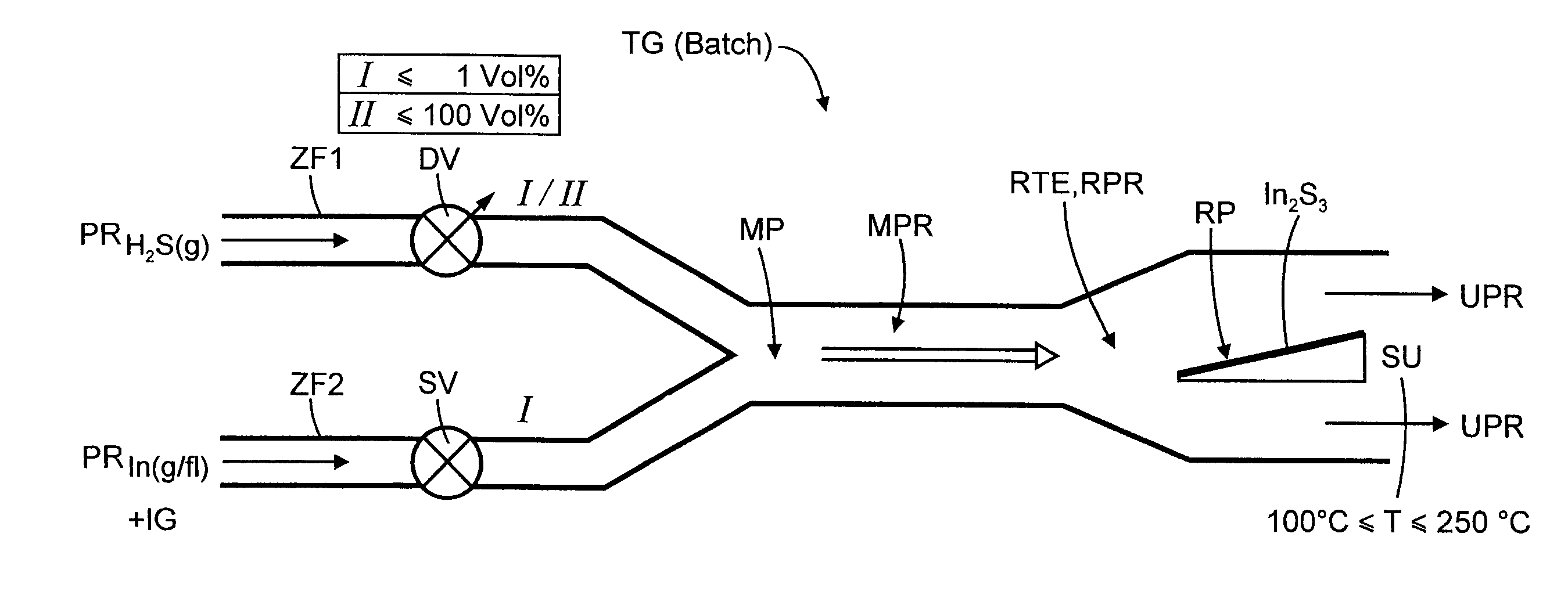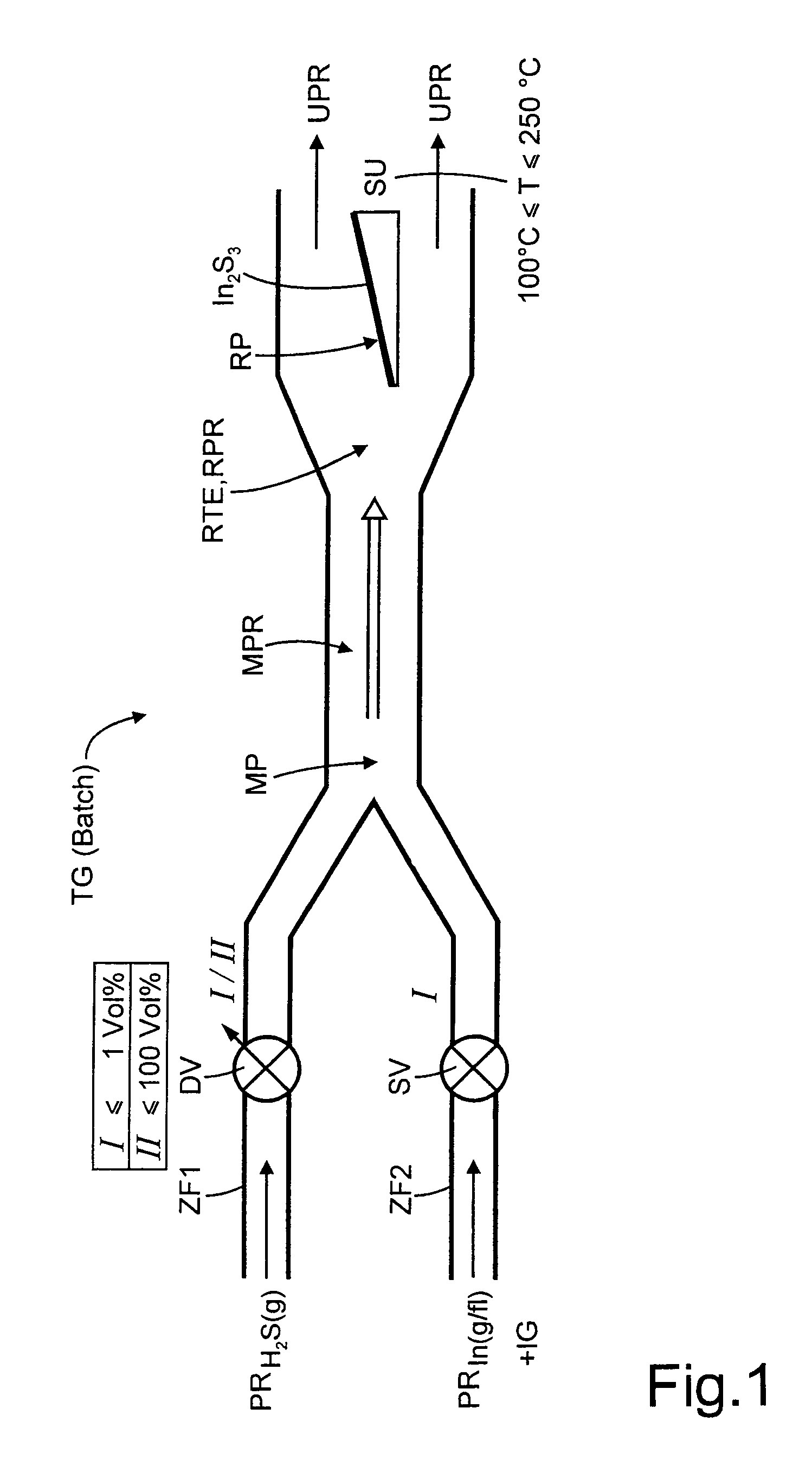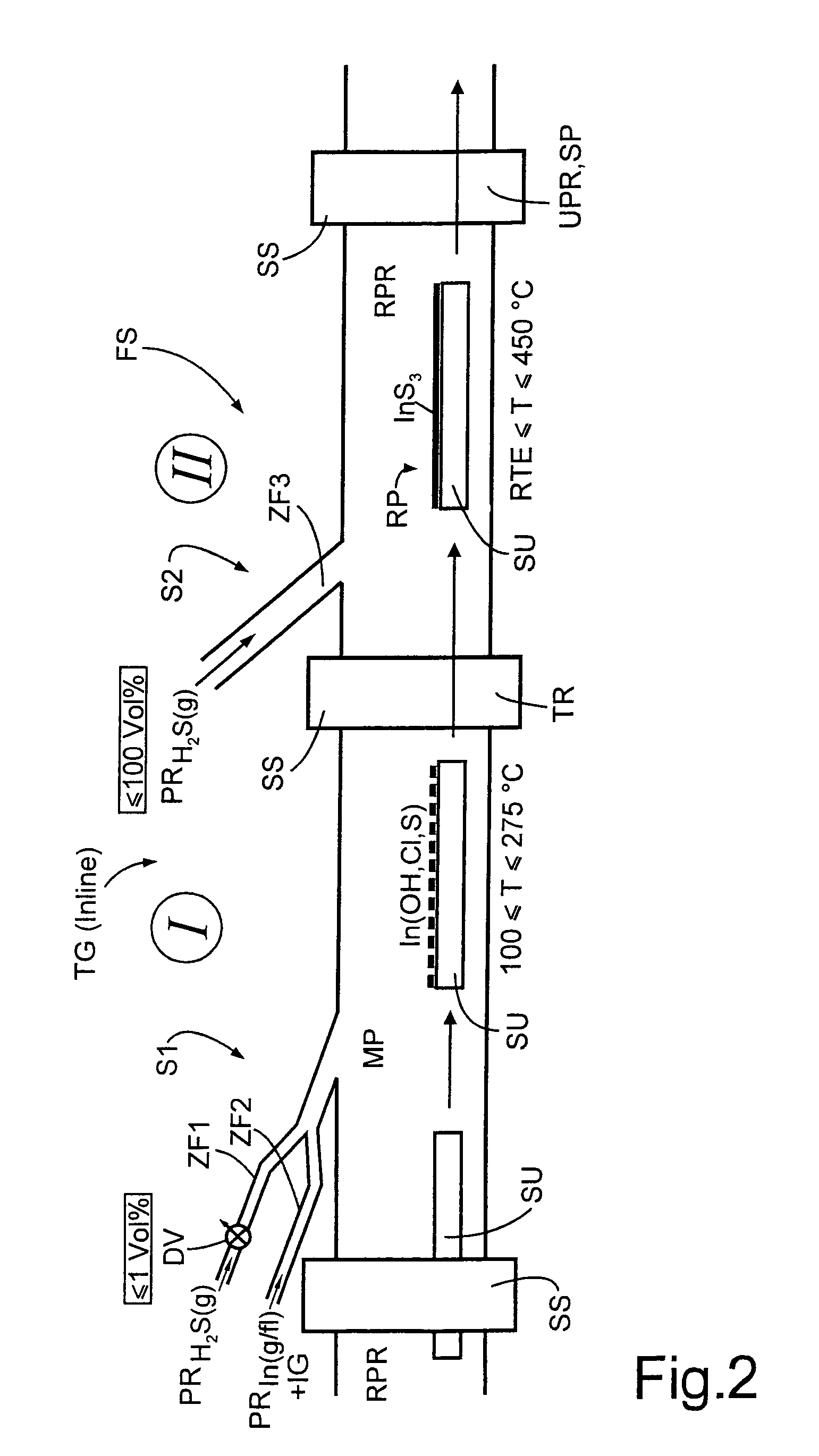Method and arrangement for producing an N-semiconductive indium sulfide thin layer
a technology of semi-conductive indium sulfide and thin film, which is applied in the direction of individual semiconductor device testing, semiconductor/solid-state device testing/measurement, instruments, etc., can solve the problems of poor film adhesion and homogeneity, inability to meet the requirements of the substrate, and inherently slow and hardly suitable process
- Summary
- Abstract
- Description
- Claims
- Application Information
AI Technical Summary
Problems solved by technology
Method used
Image
Examples
Embodiment Construction
[0015]In an embodiment, an aspect of the present invention is to improve the above-described (“spray ILGAR”) method for producing indium sulfide thin films (In2S3) on a heated substrate using a sprayable, indium-containing precursor and hydrogen sulfide as a reactive gaseous precursor, and to do so in such a way that particularly homogeneous and compact indium sulfide films of constant quality can be produced, taking account of economic and ecological aspects, while at the same time further improving the material utilization and deposition rate. A system is provided to implement the improved method in a particularly simple and inexpensive manner.
[0016]In an embodiment of the method of the present invention, a spray ILGAR method is enhanced by a CVD process step, more specifically, by an atmospheric pressure chemical vapor deposition (APCVD) process step (CVD at atmospheric pressure), while maintaining its advantages mentioned in the publications cited above, a simultaneous process b...
PUM
| Property | Measurement | Unit |
|---|---|---|
| temperature | aaaaa | aaaaa |
| temperature | aaaaa | aaaaa |
| temperature | aaaaa | aaaaa |
Abstract
Description
Claims
Application Information
 Login to View More
Login to View More - R&D
- Intellectual Property
- Life Sciences
- Materials
- Tech Scout
- Unparalleled Data Quality
- Higher Quality Content
- 60% Fewer Hallucinations
Browse by: Latest US Patents, China's latest patents, Technical Efficacy Thesaurus, Application Domain, Technology Topic, Popular Technical Reports.
© 2025 PatSnap. All rights reserved.Legal|Privacy policy|Modern Slavery Act Transparency Statement|Sitemap|About US| Contact US: help@patsnap.com



